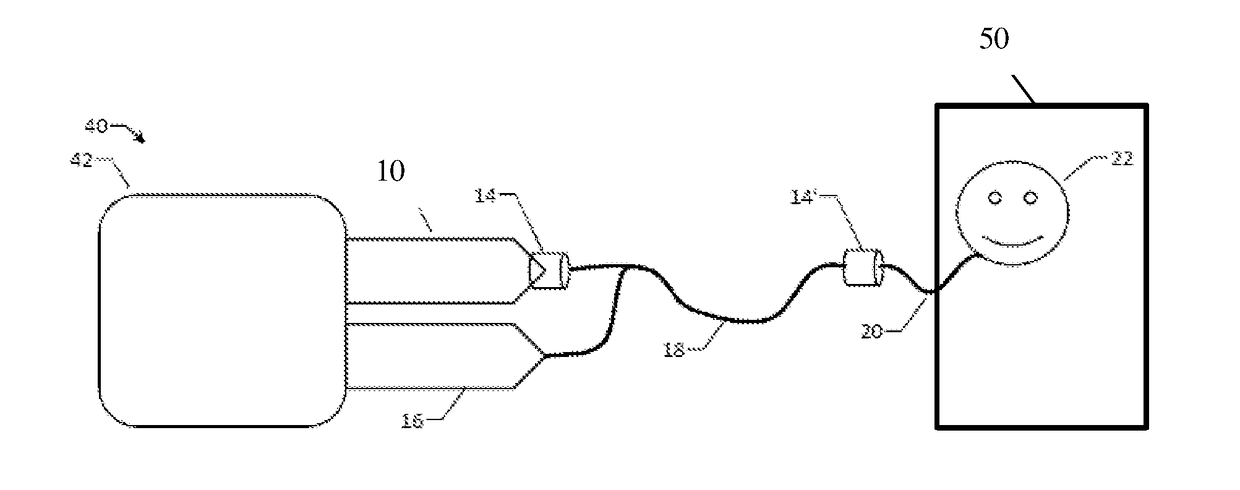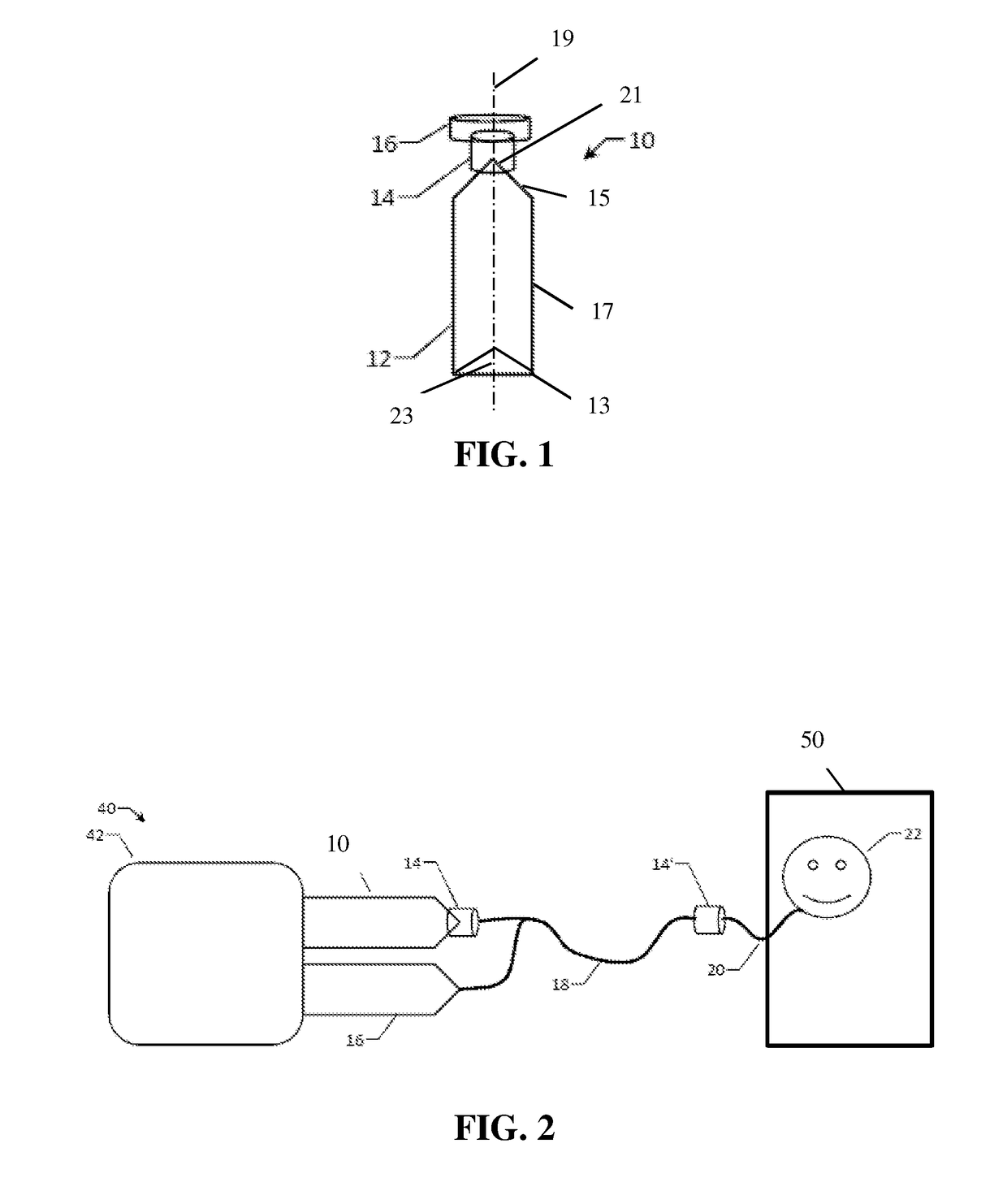Contrast imaging agent with dissolved gas-evolving fluid
a gasevolving fluid and contrast imaging technology, applied in the field of contrast agents, can solve the problems of limited spatial resolution and relatively high image noise, additional radiation dose is required for each image taken, and the hyperpolarization decays spontaneously, and requires special and expensive equipment for its creation
- Summary
- Abstract
- Description
- Claims
- Application Information
AI Technical Summary
Problems solved by technology
Method used
Image
Examples
Embodiment Construction
[0042]For purposes of the description hereinafter, the terms “upper”, “lower”, “right”, “left”, “vertical”, “horizontal”, “top”, “bottom”, “lateral”, “longitudinal”, and derivatives thereof shall relate to the components as they are oriented in the drawing figures. When used in relation to a syringe, the term “proximal” refers to a portion of a syringe nearest a fluid injector when a syringe is oriented for connecting to a fluid injector. The term “distal” refers to a portion of a syringe farthest away from a fluid injector when a syringe and / or a plunger is oriented for connecting to a fluid injector. The term “circumferential” refers to a direction around an inner or outer surface of a sidewall of a syringe. The term “axial” refers to a direction along a longitudinal axis of a syringe extending between the proximal and distal ends. The term “CT-active amount” refers to an amount of an X-ray contrast agent sufficient to get visualization of an X-ray contrast on a CT medical imager....
PUM
 Login to view more
Login to view more Abstract
Description
Claims
Application Information
 Login to view more
Login to view more - R&D Engineer
- R&D Manager
- IP Professional
- Industry Leading Data Capabilities
- Powerful AI technology
- Patent DNA Extraction
Browse by: Latest US Patents, China's latest patents, Technical Efficacy Thesaurus, Application Domain, Technology Topic.
© 2024 PatSnap. All rights reserved.Legal|Privacy policy|Modern Slavery Act Transparency Statement|Sitemap


